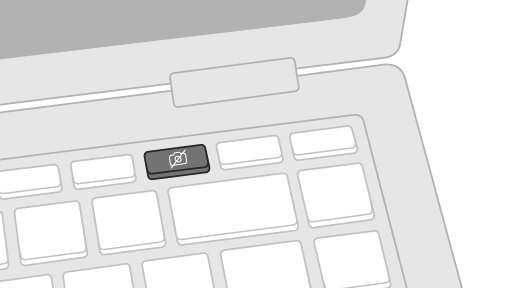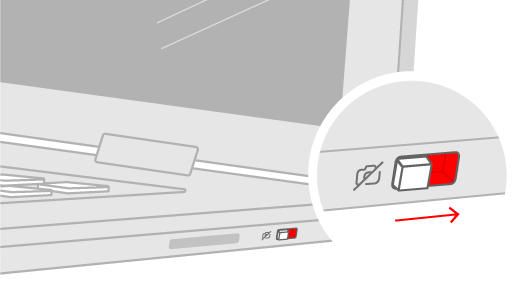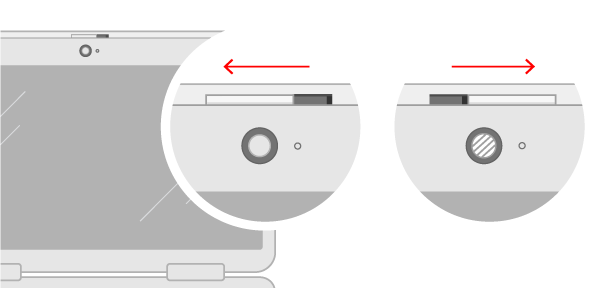When your camera isn't working in Windows 11, it might be missing drivers after a recent update. It's also possible that your antivirus program is blocking the camera, your privacy settings don't allow camera access for some apps, or there's a problem with the app you want to use.
Before you begin
Start by running the automated camera troubleshooter in the Get Help app. Get Help automatically runs diagnostics and takes the correct steps to fix most camera issues.
If the Get Help app is unable to resolve your camera issue, do these steps first before working through the possible solutions listed:
-
Check for updates. Select Start > Settings > Windows Update > Check for updates.
-
If there are no updates for your camera, try to select Advanced options > Optional updates, and look for any driver updates for your camera. Allow available updates to install, then restart your device when it's ready.
-
-
Restart your PC. If you haven't restarted your device since the camera stopped working, you should do so. Select Start > Power > Restart . Waking up your device from sleep isn't the same thing as a restart.
-
Test your camera with the Camera app. Select Start , then choose Camera from your apps. If you're asked to allow access to the Camera, select Yes. If the camera works in the Camera app, the problem might be with the app you're trying to use.
Open Camera
If your camera still doesn’t work, here are some other things to try. For the best results, try the possible fixes in the order presented.
Check for a camera switch or button on your device
Some laptops and portable devices have a physical switch or button that turns the camera on or off. When it's turned off, your device may not recognize that there's a camera installed, or it may cause your camera to show an image of a camera with a slash through it. If your laptop has a switch or button, make sure it's in the on position before using your camera.
Those switches or buttons may not be easy to find, so make sure you check all possible places. For example, it could be:
-
A button on the keyboard that's activated with the Fn key
-
A dedicated camera button on the keyboard

-
A sliding switch on the side of a laptop

-
A small slider for a shutter, built right into the camera

Check your settings
Give your apps permission
If you recently updated Windows 11, you might need to give apps permission to use the camera. In newer versions of Windows 11, some apps won't have default access to the camera.
Here's how to let your apps access the camera:
-
Select Start > Settings > Privacy & security > Camera .
Allow access to the camera on this device -
Make sure Camera access is turned on.
Note: If camera access for the device is turned off and greyed out, you'll need an administrator on the device to turn on camera access for you.
-
Make sure Let apps access your camera is turned on.
-
Choose which apps should have access. Only apps that were installed from the Microsoft Store will appear in this list.
If you're having problems with an app that you did not install from Microsoft Store, make sure that Let desktop apps access your camera is turned on. You can't turn off camera access for individual desktop apps. Internet browsers, like Microsoft Edge, and many video conferencing apps, like Microsoft Teams, are desktop apps that require this setting to be turned on.
Check your antivirus software
In your antivirus software settings, look for settings that block access to your camera or permission to use your camera. For help, visit your antivirus software company’s website.
Check your hardware drivers
Try a different USB port and scan for hardware changes
If you're using an external camera, try using it with a different USB port on your device first. If that doesn't work, or your camera is built in on your device, try this:
-
Select Start , type device manager, then select it from the search results.
-
Find your camera under Cameras, Imaging devices, or Sound, video and game controllers.
-
If you can't find your camera, select the Action menu, then select Scan for hardware changes.
-
Wait for it to scan and reinstall updated drivers, restart your device, then open the Camera app again to test it.
-
If these steps don't fix your issue, continue to the next steps.
Roll back the camera driver
If your camera stopped working after an update, try these steps:
-
In Device Manager, right-click (or press and hold) on your camera, then select Properties.
-
Select the Driver tab, select Roll Back Driver, and then choose Yes. (Some drivers don’t provide this option. If your driver doesn’t have Roll Back Driver available, go ahead to the next fix.)
-
After the roll back is complete, restart your device, and then try opening the Camera app again.
-
If rolling back didn’t work or isn’t available, continue to the next steps.
Uninstall your camera driver and scan for hardware changes
-
In Device Manager, right-click (or press and hold) on your camera, and then select Properties.
-
Select the Driver tab, then select Uninstall Device. Select the check box for Attempt to remove the driver for this device, then select OK.
-
In Device Manager, on the Action menu, select Scan for hardware changes.
-
Wait for it to scan and reinstall updated drivers, restart your PC, and then try opening the Camera app again.
Note: If your camera still doesn’t work, look for help on the camera manufacturer’s website.
Switch to UVC driver
Most available USB webcams are UVC (standard USB Video Class) compatible cameras. They will work with the UVC driver that is included in Windows (the in-box UVC driver). If your webcam is not working correctly, swapping to the in-box UVC driver may resolve the issue. Please follow the steps below to change drivers (admin rights are required).
Note: The in-box UVC driver may not support all the features of your camera. For example, Windows Hello face recognition may no longer work if it was supported by the camera manufacturer's driver using custom USB extensions not supported by the in-box driver.
-
Select Start , type device manager, then select it from the search results.
-
Find the problem webcam from the list of devices shown in the Device Manager. It should appear either under Cameras or Imaging devices.
-
Right-click the webcam device and select Update driver.
-
Select Browse my computer for drivers.
-
Select Let me pick from a list of available drivers on my computer.
-
Select USB Video Device and then select Next to complete the driver update.
-
Select Close to acknowledge settings choices and go back to Device Manager. The webcam will now appear under the Cameras category in the Device Manager list.
Need more help?
If you'd like to learn about the basics of using the camera, see How to use the Camera app.
Find answers in the forums
If the previous solutions didn't work, try searching for similar problems in the Microsoft Community forum and search for Camera. If you don’t find a solution, go ahead and share details about your experience there, then check back later for responses.
Submit feedback
If you've tried the steps in this article and don't find a solution that works, use Windows Feedback Hub to report an issue. This will help Microsoft find the cause of this problem and improve your experience.
Include details about what you were doing, or specific steps you were taking, when the problem occurred. Be sure to use Recreate my problem when you submit your feedback in the Feedback Hub.
Related topics
When your camera isn't working in Windows 10, it might be missing drivers after a recent update. It's also possible that your antivirus program is blocking the camera, your privacy settings don't allow camera access for some apps, or there's a problem with the app you want to use.
Before you begin
Start by running the automated camera troubleshooter in the Get Help app. Get Help automatically runs diagnostics and takes the correct steps to fix most camera issues.
If the Get Help app is unable to resolve your camera issue, do these steps first before working through the possible solutions listed:
-
Check for updates. Select Start , then select Settings > Update & Security > Windows Update > Check for updates. If you see the option to View optional updates, select it to see if there are updates available for your camera. Allow available updates to install, then restart your device when it's ready.
-
Restart your PC. If you haven't restarted your device since the camera stopped working, you should do so. Select Start , then select Power > Restart. Waking up your device from sleep isn't the same thing as a restart.
-
Test your camera with the Camera app. Select Start , then choose Camera from the list of apps. If you're asked to allow access to the Camera, select Yes. If the camera works in the Camera app, the problem might be with the app you're trying to use.
Open Camera
If your camera still doesn’t work, here are some other things to try. For best results, try the possible fixes in the order presented.
Check for a camera switch or button on your device
Some laptops and portable devices have a physical switch or button that turns the camera on or off. When turned off, your device won't recognize that there's a camera installed, or may cause your camera to show an image of a camera with a slash through it. If your computer has a switch or button, make sure it's in the on position before using your camera.
Those switches or buttons may not be easy to find, so make sure you check all possible places. For example, it could be:
-
A sliding switch on the side of a laptop

-
A button on a keyboard with a camera icon

-
A small slider for a shutter, built right into the camera

Check your settings
Give your apps permission
If you recently updated Windows 10, you might need to give apps permission to use the camera. In newer versions of Windows 10, some apps don’t have default access to the camera.
To let your device access the camera, select Start , then select Settings > Privacy > Camera . In Allow access to the camera on this device, if Camera access for this device is turned off, select Change and turn on Camera access for this device.
Allow access to the camera on this device
Note: If camera access for the device is turned off and you can't select Change, you'll need an administrator on the device to turn on camera access for you.
Before any app can access your camera, make sure camera access is turned on for apps in your user account. Make sure that Allow apps to access your camera is turned on.
After allowing access to the camera, go to Choose which Microsoft Store apps can access your camera and turn on camera access for the apps you want. Only apps installed from the Microsoft Store will show in this list.
If you installed the app from the internet, a disc, a USB drive, or your IT administrator installed the app for you, it might not be a Microsoft Store app. To check, go to Allow desktop apps to access your camera and make sure it's turned on. Internet browsers (like Microsoft Edge) and many video conferencing apps (like Microsoft Teams) are desktop apps that require this setting to be turned on.
Check your antivirus software
In your antivirus software settings, look for settings that block access to your camera or permission to use your camera. For help, visit your antivirus software company’s website.
Check your hardware drivers
Try a different USB port and scan for hardware changes
If you're using an external camera, try using it with a different USB port on your device first. If that doesn't work, or your camera is built in on your device, try this:
-
In Search on the taskbar, type device manager, then select it from the search results.
-
Find your camera under Cameras, Imaging devices, or Sound, video and game controllers.
-
If you can't find your camera, select the Action menu, then select Scan for hardware changes.
-
Wait for it to scan and reinstall updated drivers, restart your device, then try opening the Camera app again.
-
If these steps don't fix your issue, continue to the next steps.
Check for an incompatible camera driver
Some older cameras that were designed for older devices aren't compatible with Windows 10. Here's how to check if your camera is compatible:
-
In Device Manager, look for your camera under Cameras, Imaging devices, or Sound, video and game controllers.
-
Right-click (or press and hold) on the name of your camera, and then select Properties.
-
Select the Driver tab, select the Driver Details button, and look for a file name that includes stream.sys. If it’s there, your camera was designed before Windows 7 and you'll have to replace it with a newer camera.
-
If you don't find a file name that includes stream.sys, continue to the next steps.
Roll back the camera driver
If your camera stopped working after an update, try these steps:
-
In Device Manager, right-click (or press and hold) on your camera, and then select Properties.
-
Select the Driver tab, select Roll Back Driver, and then choose Yes. (Some drivers don’t provide this option. If your driver doesn’t have Roll Back Driver available, go ahead to the next fix.)
-
After the roll back is complete, restart your device, and then try opening the Camera app again.
-
If rolling back didn’t work or isn’t available, continue to the next steps.
Uninstall your camera driver and scan for hardware changes
-
In Device Manager, right-click (or press and hold) on your camera, and then select Properties.
-
Select the Driver tab, then select Uninstall Device. Select the check box for Delete the driver software for this device, then select OK.
-
In Device Manager, on the Action menu, select Scan for hardware changes.
-
Wait for it to scan and reinstall updated drivers, restart your PC, and then try opening the Camera app again.
Note: If your camera still doesn’t work, look for help on the camera manufacturer’s website.
Switch to UVC driver
Most available USB webcams are UVC (standard USB Video Class) compatible cameras. They will work with the UVC driver that is included in Windows (the in-box UVC driver). If your webcam is not working correctly, swapping to the in-box UVC driver may resolve the issue. Please follow the steps below to change drivers (admin rights are required).
Note: The in-box UVC driver may not support all the features of your camera. For example, Windows Hello face recognition may no longer work if it was supported by the camera manufacturer's driver using custom USB extensions not supported by the in-box driver.
-
In Search on the taskbar, type device manager, then select it from the search results.
-
Find the problem webcam from the list of devices shown in the Device Manager. It should appear either under Cameras or Imaging devices.
-
Right-click the webcam device with your mouse and select Update driver.
-
Select Browse my computer for drivers.
-
Select Let me pick from a list of available drivers on my computer.
-
Select USB Video Device and then select Next to complete the driver update.
-
Select Close to acknowledge settings choices and go back to Device Manager. The webcam will now appear under the Cameras category in the Device Manager list.
Need more help?
If you'd like to learn about the basics of using the camera, see How to use the Camera app.
Find answers in the forums
If the previous solutions don’t work, try searching for similar problems in the Microsoft Community forum and search for Camera. If you don’t find a solution, go ahead and share details about your experience there, then check back later for responses.
Submit feedback
If you've tried the steps in this article and don't find a solution that works, use Windows Feedback Hub to file a bug. This helps Microsoft find the root cause of this problem.
Include details about what you were doing, or specific steps you were taking, when the problem occurred. Be sure to use Recreate my problem when you submit your feedback in the Feedback Hub.
For help submitting feedback with Feedback Hub, see Send feedback to Microsoft with the Feedback Hub app.











